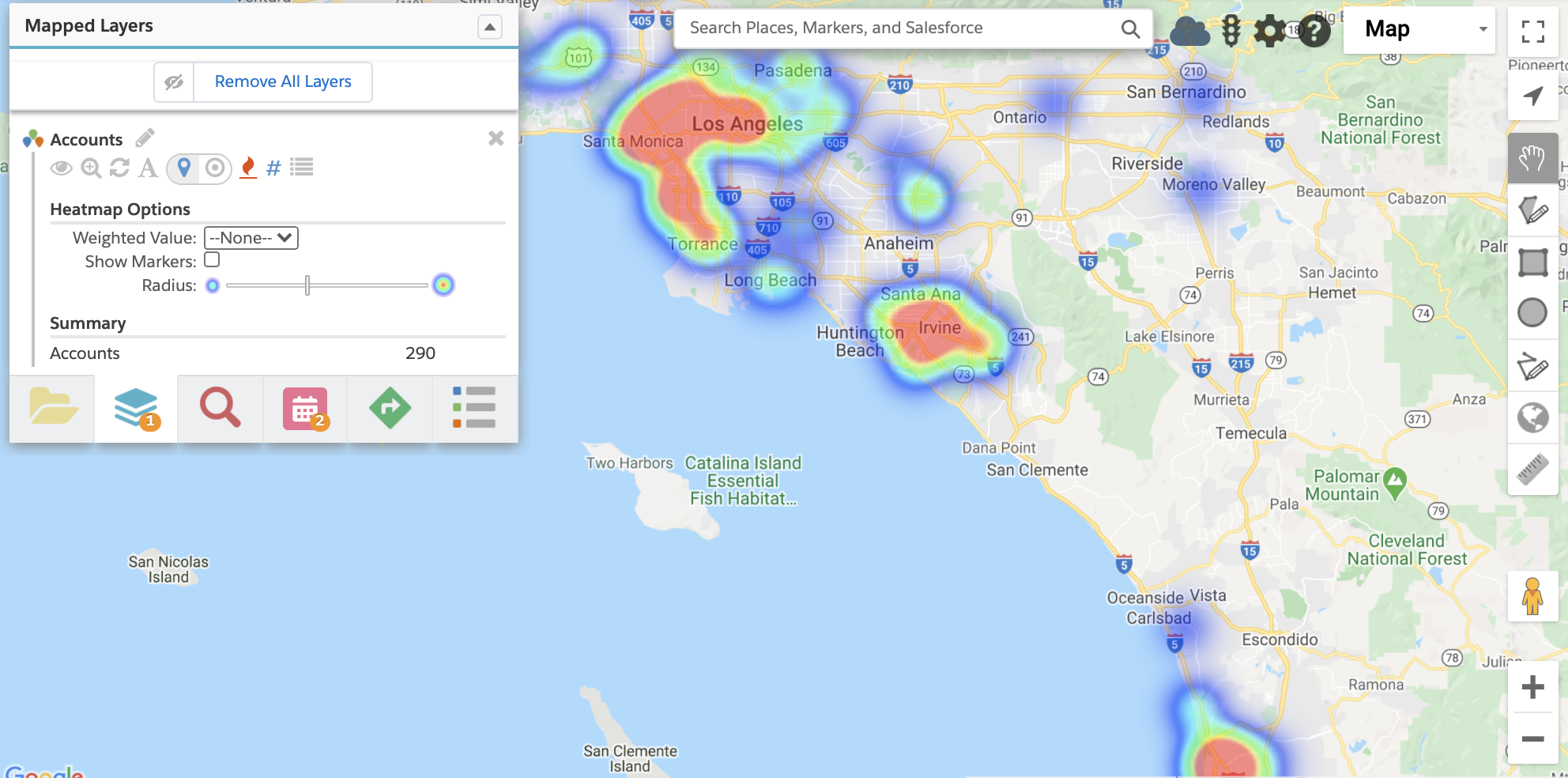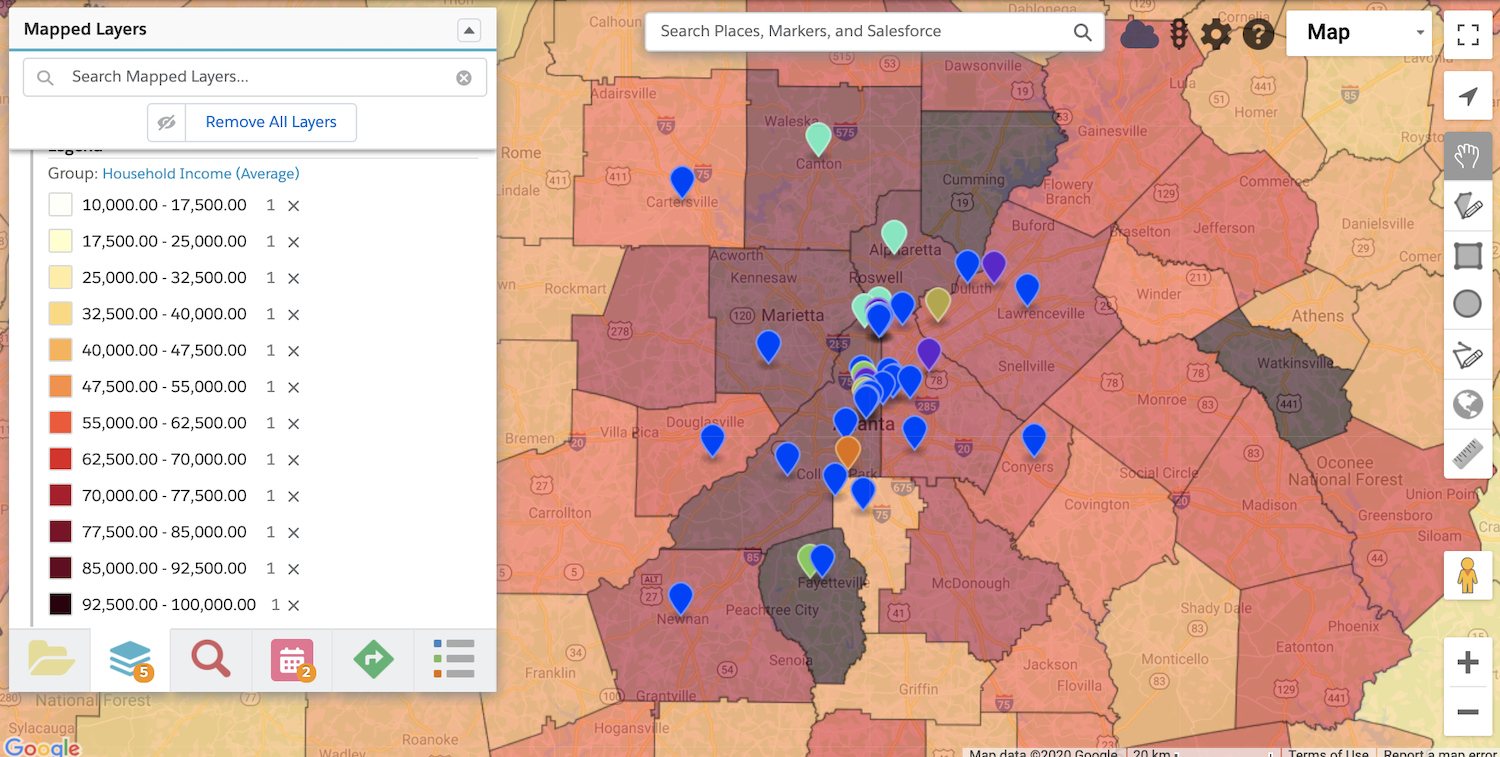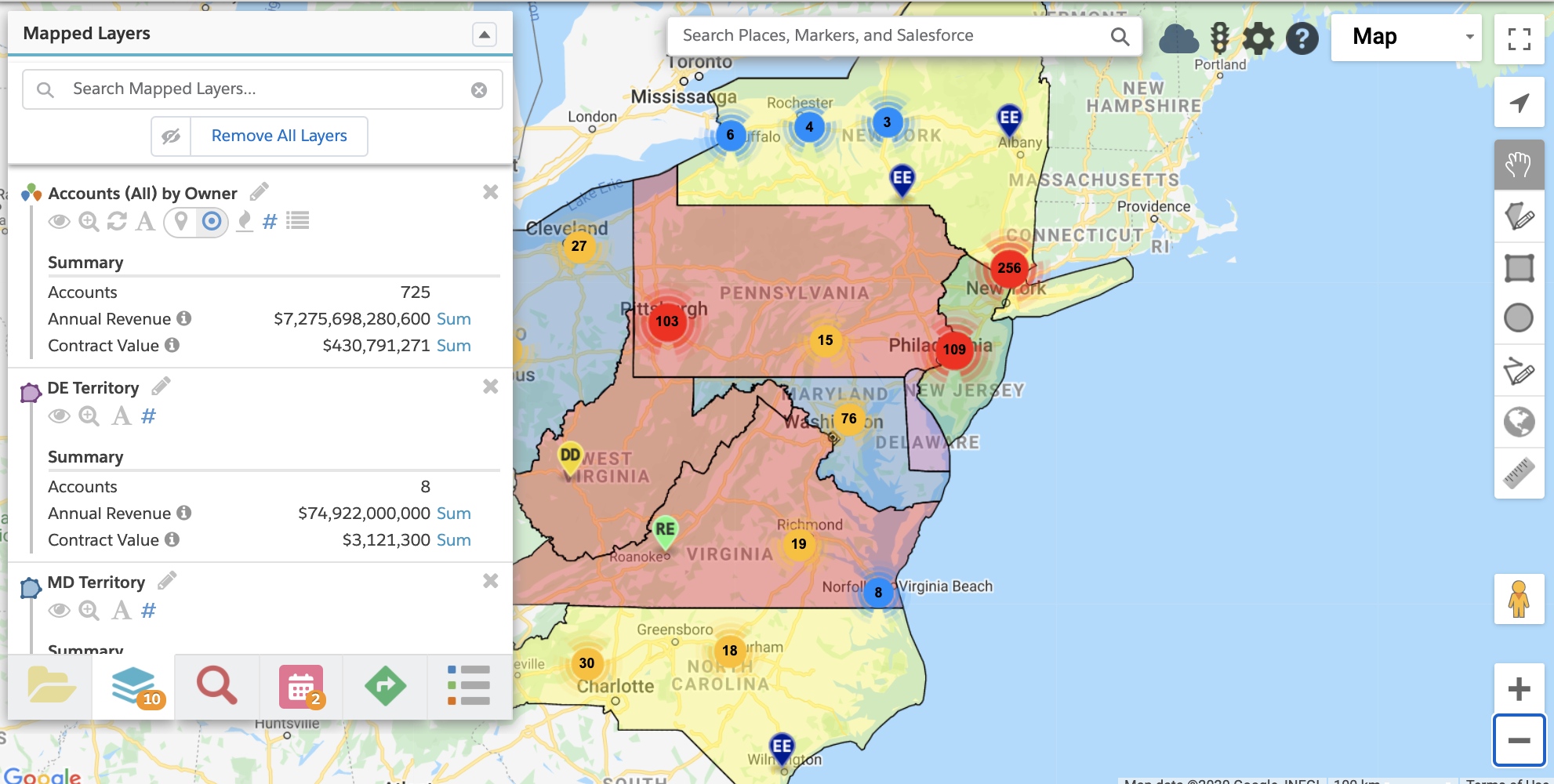
With 2021 quickly approaching, organizations are trying their best to plan for the uncertain future. Using a solution like Geopointe in this planning will provide you additional insights that your CRM data alone doesn’t give you.
To begin your planning process, you’ll want to start by reevaluating 2020.
We know, most of us would prefer to fast-forward to next year and forget 2020 completely. But in order for your organization to progress, looking at this year is important. Think back to how your organization adapted in the Spring; unexpected hurdles you encountered, and how you overcame them. You most likely adjusted with the resources and people you had, and although your circumstances may be different now than they were back then, Geopointe helps you do more with the data you already have.
Data Visualization
When reevaluating 2020, data visualization is key for understanding your customer.
Heat maps are a great way to visualize your data in order to gain insights and recognize trends. With heat mapping, you can see where a majority of your opportunities are coming from to infer which locations/territories, industries, or lead sources are doing best in order to understand where to target your efforts.

Using thematic maps will help you get an even better look at where to focus your efforts. By using thematic maps, it’s easier to visualize geographic boundaries based on ARR, record count, or any other numeric value. Endless lists of information often lead to confusion and the details can be missed, but by using thematic maps, you can choose any metric and Geopointe will help you visualize it based on boundaries you set.
Geopointe has a variety of external layer types for you to choose from. Layer these over your data to gain additional information you might not already have access to. You’ve heard the term, “Know your audience,” and this rings true with sales. You’ll want to know more than before when prospecting to new or existing customers, and having some additional knowledge about the area they’re in will increase your ability to be empathetic to their circumstances.
Demographic layers pair US Census data with your Salesforce data in order to help you understand your clients and prospects but also teach you more about your target market.

You can expand your knowledge with additional layers (KML, WMS) when planning for 2021. Learn where in-person events or meetings are allowed and what areas are least affected by COVID in order to be empathetic to your customer base, while also making progress in your business.
Most of our customers were concerned with COVID-19 this year and how it was going to affect their organization. Reference our previous blog to learn about our dynamic COVID layer, provided to Geopointe customers by Genasys.com.
CSV Import
After all the research and reevaluating you have done, you might have some additional data points you’d like to view, but you don’t quite have the time to add them to Salesforce, or maybe you don’t want to. We get it. As long as your CSV has fields for addresses and/or latitudes/longitudes, you can upload it directly to the map, and visualize this data- possibly for the first time.
Geographic Searching and Analysis
It can be overwhelming when you don’t know what information to start mapping first. So, consider what matters most to your organization, and begin there. Instead of looking at endless spreadsheets about your open opportunities, or a list of hundreds of leads, visualize this data on the map to get a better understanding in order to come up with your game plan.

Territory Planning
Everything has changed this year, and for this reason, you’ll want to ensure that you have all your territories covered in 2021. Geopointe is a great way to design, and re-design territories. Begin by looking at account concentrations, ensuring accounts are evenly distributed amongst your team (whether it’s by ARR, total number of accounts, etc.), and that all accounts have been correctly assigned.
With updates to our multi-shape editor feature, users can now edit and view multiple shapes at once, along with their data summaries. And once you have your territories set up, quickly use Automated Assignments to ensure accounts, leads, opportunities, and more are assigned to the new user in a territory.
Once accounts are evenly distributed and assigned to their respective account owners, it’s time to dig into the data.
Once you’ve put in the work to plan and prep for the best 2021, you’re ready to execute. This doesn’t mean your research should stop. Continue to learn about your customers, prospects, and the areas that surround them throughout the year to ensure success.
Keep your Salesforce data up-to-date so your planning is accurate
You’ll also want to utilize Geopointe to keep everything up-to-date. 2020 was a year of constant change, but we expect it to continue well beyond the year. Use Geopointe to keep your Salesforce data up-to-date by performing mass updates and transferring accounts, contacts, etc. to the proper owners. Geopointe is also a great way to ensure addresses stored in your database are correct. Geopointe not only will geocode your data using Google’s geocoding technology, but will continue to scan your records for changes and updates to prepare it for mapping.
For more information on using Geopointe to clean up your Salesforce data, view our blog which also includes a link to a short webinar.
If 2020 taught us one thing, it’s to be resilient. It took a lot of experimenting, trying new things- and sometimes failing. We couldn’t have seen this year coming and it’s hard to plan for the unpredictable future, but coming up with a strategic plan for 2021 using the data you already have (along with some help from Geopointe) is a great place to start.

